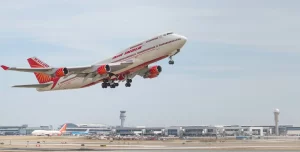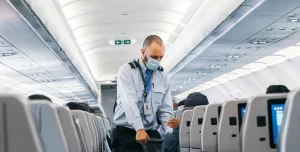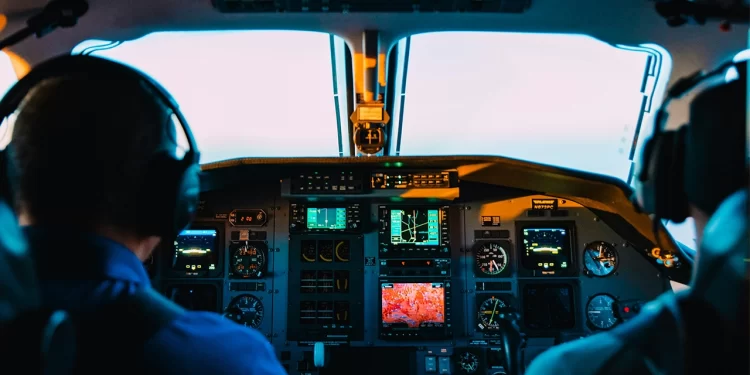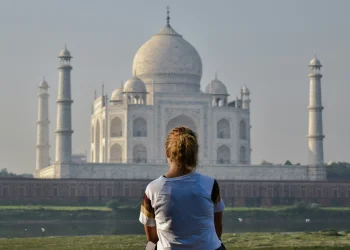Delhi: The aviation sector in India is flying high, with new international routes being added almost daily and an ever-increasing number of Indian travellers jetting off to exotic destinations. From the beaches of Bali to the historic streets of Baku, the Indian middle class is fueling a robust demand for global travel. Yet, amid this rapid expansion, foreign tourist arrivals (FTAs) in India are still struggling to return to pre-Covid levels.
In the first half of 2024, India recorded 4,778,374 foreign tourist arrivals, marking a 9.1% increase over the same period in 2023. However, this figure falls short by nearly 10% when compared to the 5,296,025 foreign tourists who visited the country in the first six months of 2019, before the Covid-19 pandemic brought global travel to a standstill.
Interestingly, while FTAs have yet to fully recover, the international footfall at Indian airports has surged by 9.9% in the first quarter of the 2024-25 financial year, compared to the same period in 2019-20. This paradox reflects a complex interplay of factors, including increased outbound travel by Indians and the shifting dynamics of global tourism.

According to data from aviation analytics firm Cirium, India added 674 weekly international flights and 140,435 additional seats on routes originating from the country by the end of June 2024. This represents a nearly 20% increase in departures and available seats, and a 27.5% growth in Available Seat Kilometers (ASK), compared to June 2019.
Also Read: India Sees 4.7 Percent Growth In Domestic Air Passenger Traffic For January-July 2024
Yet, despite this surge in capacity and connectivity, the appeal of India as a destination for foreign tourists appears to have softened. While the Ministry of Tourism reports a 5.54% increase in Foreign Exchange Earnings (FEE) in the first half of 2024 compared to 2019, the decline in visitor numbers suggests that higher spending may be due to rising costs rather than an influx of wealthier tourists. The weakening of the rupee has further amplified this increase, with FEE in rupee terms up by 25.4%.

The challenges Indian tourism sector is facing are multifaceted. The ongoing Russia-Ukraine war, instability in the Middle East, and post-pandemic economic uncertainties have all contributed to a cautious global travel environment. Moreover, stricter Covid-19 regulations in China have dampened travel from one of India’s key source markets, while nearby destinations like Thailand and Malaysia have capitalized on the opportunity by offering visa-free travel to Indian tourists.
Domestically, the Indian market has bounced back with vigor, surpassing pre-Covid passenger numbers in 2023 despite the collapse of a major airline. However, the recovery of foreign tourist arrivals has been more sluggish. Airports such as Singapore’s Changi, a popular gateway for international travellers, only began to see a rebound in the holiday season of 2024 after lagging behind pre-Covid averages earlier in the year.
Also Read: All-Women Team To Run Hotel Amaltas In Pachmarhi
Experts suggest that India needs a renewed and aggressive tourism campaign to recapture the attention of foreign visitors. The success of past initiatives like “Incredible India” and “Atithi Devo Bhava” demonstrates the potential impact of strategic marketing.

However, such efforts must be accompanied by improvements in infrastructure and services. The increasing traffic congestion in major cities and tourist hubs, coupled with concerns over cleanliness and safety, poses challenges to making India an attractive destination.
As India navigates the post-pandemic world, the need for a comprehensive approach to tourism has never been greater. Investments in infrastructure, enhanced safety measures, and a strong marketing push could help bridge the gap between current visitor numbers and the booming pre-Covid era. The tourism industry, a critical source of foreign exchange, cannot afford to be overlooked in the broader economic strategy of India.

Founded in 2016, The Traveller Trails is a print and digital magazine and a trusted source for current news, trends, analysis, opinions, interesting blogs, videos and exclusive interviews from every corner of the world.












